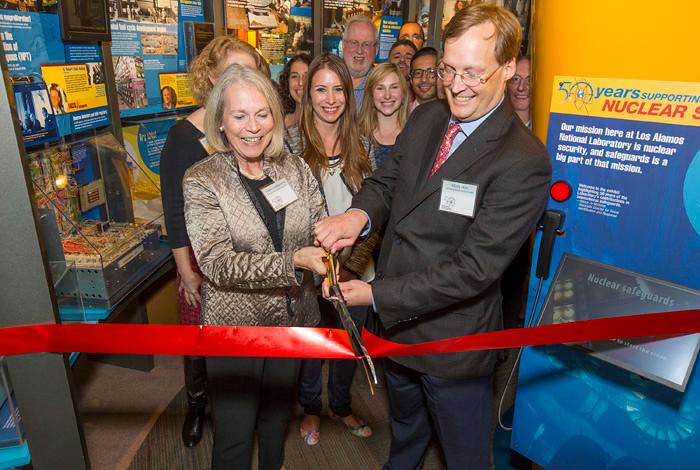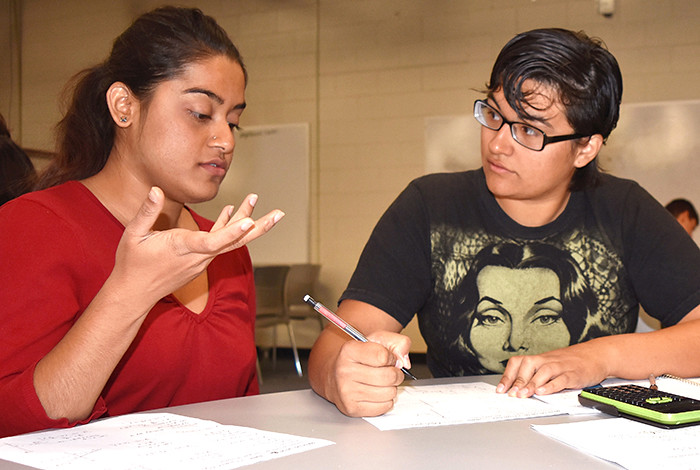In other news

On November 15, students will have the opportunity to experience naturally occurring and computer-generated fractals in Las Vegas, New Mexico.
Our Fractal World
Complex and simple at the same time, fractals are created by repeating patterns. Nature’s fractal patterns are evident in tree branches, seashell rings, and cloud clusters. On November 15, students in Las Vegas, New Mexico, will have the opportunity to experience computer-generated fractals.
Our Fractal World, presented at 1 p.m. at Ilfeld Auditorium at New Mexico Highlands University, will demonstrate how the complexity of nature is created through repetition of simple processes. Emma Eckert of the New Mexico Fractal Foundation will discuss fractals and their applications in the fields of science, technology, engineering, math, architecture, and art. Public school students will be shown how to explore fractals on their own with free fractal software.
At 7 p.m., Eckert will give a second presentation for university students and the general public.
This program is offered at no charge and is sponsored by Los Alamos National Laboratory, Los Alamos National Security, Luna Community College, The United World College, New Mexico MESA, and New Mexico Highlands University. For more information, contact Francisco Apodaca, Director of STEM at Luna Community College at fapodaca@luna.edu.

On November 15, students in Las Vegas, New Mexico, will have the opportunity to experience computer-generated fractals.
Nuclear safeguards exhibit opens at the Bradbury
A new exhibit at the Bradbury Science Museum highlights 50 years of nuclear safeguards at Los Alamos National Laboratory. Nuclear safeguards are measures that help ensure nuclear material around the world is being used for peaceful purposes—such as energy or in the medical field—and not for weapons development.
The Laboratory has played a critical role in developing instruments and training international inspectors who go to nuclear facilities around the world to make sure countries are complying with treaty agreements to not develop nuclear weapons.
The new exhibit shows the history of nuclear safeguards, which began development shortly after President Eisenhower’s Atoms for Peace program, when the world’s leaders were concerned about the proliferation of nuclear weapons but didn’t want to hinder the scientific and economic advances of the nuclear age. The exhibit also details the Laboratory’s role in both the advent of safeguards and their continued development.
The exhibit is open to the public, and admission is free. Visit the BSM webpage for more information.
Read more about the Laboratory’s safeguards inspector training in a Huffington Post blog, Keeping nuclear materials secure in an uncertain world, by Nancy Jo Nicholas, Associate Director for Threat Identification and Response at Los Alamos National Laboratory.

Anne Harrington, deputy administrator for Defense Nuclear Nonproliferation for the National Nuclear Security Administration, and Kevin Veal, director of NNSA’s Office of International Nuclear Safeguards, cut a ribbon on October 20 to commemorate the opening of the Bradbury Science Museum exhibit that celebrates 50 years of nuclear safeguards work at Los Alamos.
Highlands University awarded grant for minority STEM program
More women and Hispanic students at Highlands University will graduate with degrees that prepare them for science and technology jobs, thanks to a U.S. Department of Education (DoED) grant.
The three-year, $742,175 grant is funded by the Minority Science and Engineering Improvement Program of the DoED. It will be administered through Highlands University’s award-winning Achieving in Research, Math and Science Center (ARMAS).
“This grant will ultimately help diversify the STEM workforce and fits into our historical mission at Highlands as a Hispanic-serving institution,” says Edward Martínez, the school’s former ARMAS director and current vice president of strategic enrollment management.
Martínez, who is also a natural resources management professor, co-authored the grant with Elizabeth Ratzlaff, the ARMAS Center director. The Laboratory’s Community Partnerships Office provided initial technical support for the grant writing.
Ratzlaff says the grant will help strengthen ARMAS training programs for student employees who tutor peers and assist instructors. Another component of the grant will develop a strategic plan to increase faculty collaboration across science disciplines to streamline student programs toward graduation.
Since 2009, ARMAS has helped more than 1,700 students at Highlands. Approximately 59 percent of these students are Hispanic and 46 percent are women. Science majors have increased 29 percent at the university since the program began.

Highlands chemistry senior and ARMAS math tutor Proity Nayeeb Akbar, left, discusses an algebra problem with engineering freshman Jasmine Rodríguez. Credit: Margaret McKinney/Highlands University.






